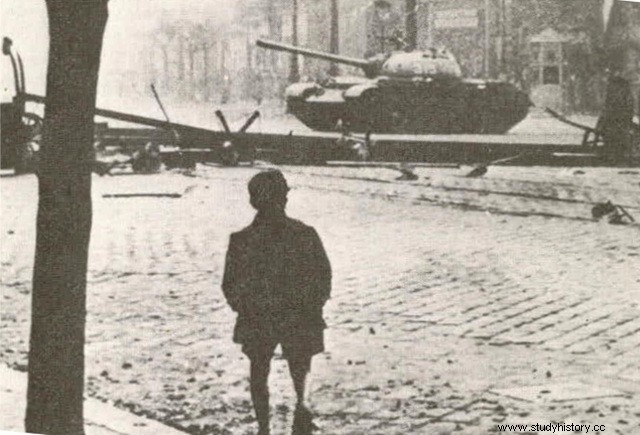
By Me. Tales Pinto
Class struggle during the Cold War took place both within the bloc of Western capitalism and within the bloc of Soviet capitalism. Yes, Soviet capitalism, as pointed out by authors who see the USSR as state capitalism, and not a sum of communist republics.
This is due to the fact that private ownership of the means of production has been replaced by state ownership of these same means, without the capitalist production relations and the exploitation of the wage worker being suppressed. A class of bureaucrats from state agencies and companies has become an exploiting class. It was against her that the Hungarian Revolution of 1956 took place.
The uprising in Hungary began on October 23, 1956, when a demonstration organized by the Petofi Circle, formed by Hungarian students and intellectuals, showed its opposition to the living conditions and against the government led by the Communist Party, led by Ernö Gerö. Instead, they asked for the return of Imre Nagy, a figure who represented a distance from the USSR and the possibility of adopting some democratic measures in the country.
About 200,000 people took part in the demonstration between students, workers and soldiers. Protesters toppled Stalin's statue and began chasing agents of the secret police, the AVH, who began shooting at the protesters. Soldiers called in to reinforce the repression have gone over to the side of the protesters.
Gerö, the leader of the Communist Party, appointed Nagy as prime minister with the aim of calming tempers. At the same time, he sought support from Soviet troops. The party was led by Janos Kadar, who had just been rehabilitated after being sentenced for political crimes.
However, students, workers and soldiers were not satisfied with the changes. From a political struggle, the revolution also became an economic and social struggle.
Factories were occupied, creating committees formed by workers to manage them. Revolutionary councils were created in Budapest and other cities in the following days to organize the population against the Soviet reaction. There was the generalization of a general strike, at the same time that the workers, along with soldiers and students, also began to arm themselves.
The climate of civil war grew in the country, especially with the persecution of AVH agents. The rulers tried to reach an agreement with Moscow. On October 30, Soviet troops withdrew from Budapest and other parts of Hungary. The intervention of the UN and the West was requested, which did not happen.
The Hungarian Revolution threatened to spread to other countries in the sphere of the USSR, threatening the Warsaw Pact. The Soviets could not accept the threat to their power, and the US and other countries were more concerned about the Suez Canal crisis. On 4 November, Red Army tanks entered Budapest, brutally suppressing the revolution. About 20,000 Hungarians were killed, against just over 700 Soviet soldiers. It was the end of the Hungarian Revolution.
But that was not the end of the workers' demonstrations against the USSR. The formation of workers' councils, such as the Szegel Council, demanded workers' self-management against the bureaucratic capitalist management of the communists. Reactions like those of the Council of Szegel and others that emerged in Hungary during this short period also took place in Poland in 1971-72 and in 1981 in Czechoslovakia in 1968, and also in the first phase of the Chinese Cultural Revolution.
The Hungarian Revolution of 1956 proved to be one of the forms of autonomous manifestations of workers, who, between the 1950s and 1960s, fought both against the private capitalists of the West and against Soviet bloc bureaucrats.
